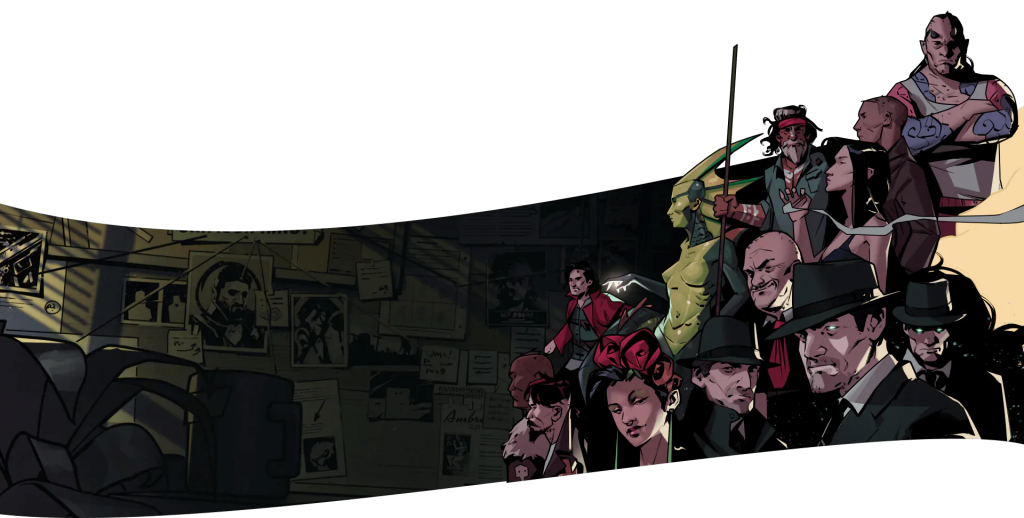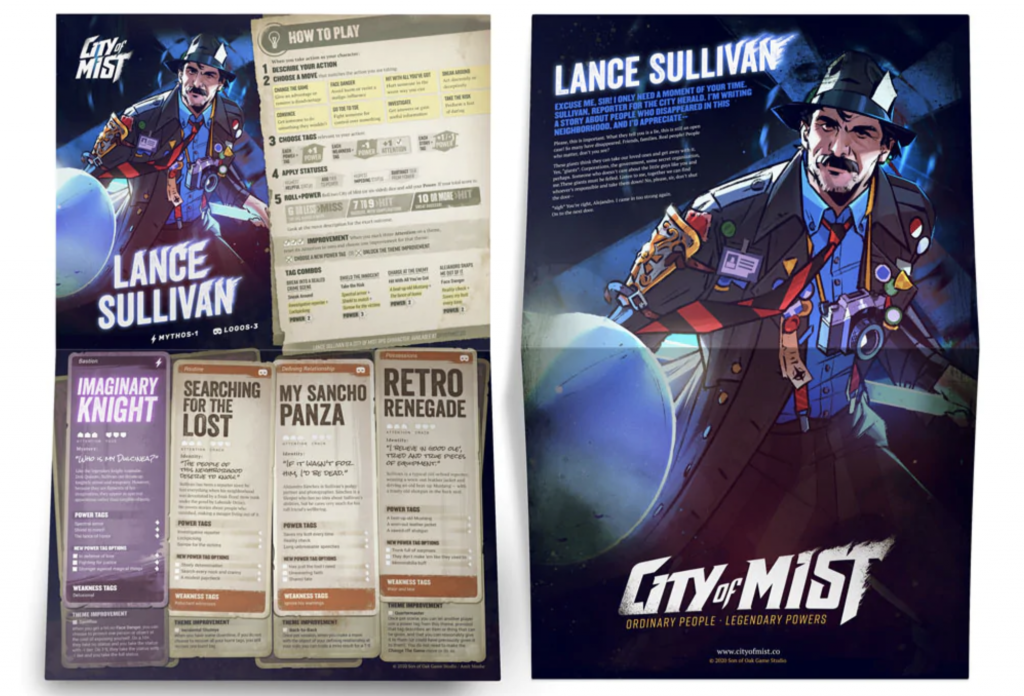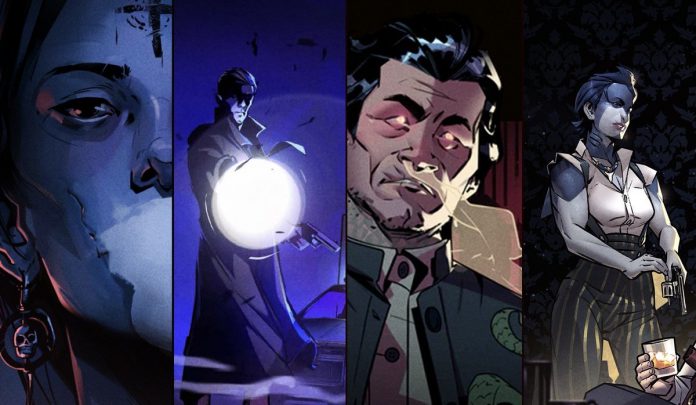There’s a tabletop game for every genre, for nearly any kind of story, but I’ve rarely found any that introduce story elements that feel original to the system and setting itself.
Enter “City of Mist.” My group found this in the midst of a search to achieve a comic book style superhero campaign. While our campaign quickly became the story of three vigilantes absolutely destroying a villain with no hesitation, the intriguing setting has stuck with me.
City of Mist is a comic book world of superheroes and villains, but it isn’t altogether bright and hopeful. Think Jessica Jones as opposed to Superman. It’s noir mystery accentuated with superpowers.
It also takes influence from the modern comic book TV shows. Sessions start with voiceover monologues from players, characters can be put under a spotlight and the MC’s book constantly says to “Think Cinematic.” It’s designed for the film or comic nerd in your life.
However, the concept of the Mythoi at the center of this world allows the story to become referential to any genre or piece of media you can think of.

The Playbooks
There is a ton of official content available for City of Mist, but let’s talk basics: the Player’s Guide and the Master of Ceremony’s Toolkit.
The first thing that jumps out is how stylish this RPG is.
The game has a defined tone which it impresses upon players from the very beginning; its system is clearly inspired by “Apocalypse World,” and pays well-earned homage to Vincent Baker on the first page.
Tone is reflected in the book’s art, from the cover and graphics to illustrations or even pages of comics that read as if they’ve been lifted from a much longer series. There are also some included scene maps in that same gritty comic book style.
The player book jumps right into the premise and rules. The MC’s book has some more advice for the MC to think of herself as a writer, referee, host and narrator all in one.
It also echoes some of my favorite advice from “Apocalypse World”: Be the characters’ biggest fan. Learn all about them, their strengths and weakness, and play for or against those traits in exciting ways.
The MC’s book features a lot of advice on how to write a compelling campaign arc. City of Mist has some expectation of following a mystery story, and it can be hard to write a mystery that players can figure out but won’t solve too quickly. The book can help with ideas of how to tease out information and adjust for clever players.

The Setting
The “City of Mist” title references the actual location where the game occurs. The City is cut off from the rest of the world by mysterious forces that aren’t usually part of the story; residents simply never think about what’s happening elsewhere and wouldn’t consider leaving.
The Mist also covers the city, operating pretty much exactly like the Mist in the “Percy Jackson” novels or the Umbral Arcana from Dimension 20’s “The Unsleeping City.” It hides any supernatural activity from those who aren’t in the know, the Sleepers.
There isn’t a map of the City, but there are defined districts including Downtown, the Old Quarter and the Industrial Zone. These each have some “places of interest” which are also intentionally vague, like the 24/7 Diner or the Subway Station. The places should be thought of more like movie sets, which can be given names if necessary.
This means that the MC can use any map they like, or none at all. Mine made a vague sketch just so we could understand where the districts were in relation to each other.
Players are also encouraged to invent places as needed, like telling an NPC to meet them at an address and then deciding later, out of character, where that address is. (This is more Apocalypse World inspiration showing through.)
This approach to the setting splits the difference a “homebrew” world and a setting pulled from a sourcebook. Most of the work is done for the MC- the atmosphere is established and the world has clear expectations. There are even a good number of NPCs described throughout the book which can be inserted into any story.
However, there also aren’t any rules to be broken about the setting. An improvised response to a player question won’t turn out to disagree with a detail the MC forgot about, because many details are left to be determined through play.

The Characters
What the Sleepers of the city don’t know about is the existence of Rifts, characters who have been awakened to the existence of their personal Mythos.
Mythos can be anything; superheroes like Spider-man, storybook characters like The Little Mermaid, legendary figures like King Arthur, mythological characters like Zeus, urban legends like Bloody Mary… anything.
Each character’s Mythos has goals which have to do with their stories and which they want to achieve through the avatar (the character) they’ve chosen. The character may agree or disagree with those goals, but still manifests powers and traits of the Mythos embodying them.
Each character also has Logos, or the regular human-being part of them as a person, which has an ever-shifting balance with their Mythos. More Mythos gives the character more supernatural powers but means that the Mythos also calls more of the shots. More Logos makes the character better at normal interpersonal stuff and more in control of their own life.
This is a bit confusing, so I’ll take a page from the playbook and try to give you an example.
Say your character’s Mythos is Loki, the original Norse one. Loki wants to sow chaos and work toward bringing about the apocalypse, Ragnorak. The second he can gain control over a human he begins subtly pushing that person into situations which he knows will cause them to interrupt the natural order. To aid this, he gives them certain powers, like the ability to shapeshift or create illusions. As he gains more power over them, he gives them more abilities and pushes them into more and more extreme situations which more directly relate to summoning the world serpent. The character could be tricked into agreeing with these goals and helping on purpose or could keep fighting back.

Mythoi may see other characters as particular figures in their own story. An example I love is a Little Red Riding Hood Mythos who may see a frightening player character as her Big Bad Wolf.
All the characters need to come together to deal with the main plot, in whatever way it may connect to their personal struggles. The party dynamic should actually be created before the individual characters.
The party structure, along with some final decisions about the city itself, create the “series concept” for the campaign. A few party structures include “conspiracy busters,” “masked vigilantes,” or a team brought together by “the event.”
The Mechanics and Gameplay
This is not a crunchy game, despite how many words I’m about to dedicate to explaining the system.
Once each player has decided on their Mythos, as well as their human life and certain strengths and weaknesses, they can choose combinations of different power types to explain how their Mythos manifests. There are some pre-generated tropes to help figure this out, especially for characters whose Mythoi don’t have supernatural powers.
The number of powers and other traits will depend on the balance of Mythos and Logos everyone has decided on, but players will typically start with two Mythos and two Logos cards. Mythos cards include powers from these categories: Subversion (trickery, illusions etc.), Mobility (speed, flying etc.), Bastion (invulnerability, shielding etc), Divination (mind reading, Spidey sense etc.), Adaptation (situationally variable abilities), Expression (powers that physically affect the world) and Relic (a magical item of some kind).
Each ability type has a little playbook with some questions for specifying a power and how it affects the character, as well as how that power could level up with use.
Mechanically, these abilities manifest as “power tags” which can be used to add bonuses to rolls when the power is being used in the ways that the character is best at.
Logos work the same way, with suggested tropes, playbooks and categories to define what made your character who they are as a person. These include Defining Event, Defining Relationship, Mission, Personality, Possessions, Routine and Training.
Playing the character is all about balancing the tropes you’ve created for your Mythos and Logos. This is where this system works for superhero stories, because you kind of have your secret identity conflict built in no matter what.

Gameplay rolls are narrowed down to a handful of core Moves which can be somewhat up to interpretation like Face Danger, Sneak Around or Take the Risk. When you’re rolling (2d6) for something, you look at all your Power Tags across all your Mythos and Logos. Any trait that would help you is +1 to your roll. Any that wouldn’t is -1. If a tag listed as a weakness is giving you that negative, you get some points toward leveling up that category.
Your MC can also let you know about other bonuses or debuffs based on environment and story. If you’ve got a gun, you’ll be more intimidating, but if there’s a lot of fog you’ll struggle to see where you’re aiming. If you’ve been pulling too many all-nighters, your MC will give you the “tired” affect which can go up to “tired-2” or “tired-3,” meaning you’ll get more than one point taken off relevant rolls.
You can also “burn” tags and make them temporarily unavailable in exchange for more effective use of your abilities.
There are rules for earning “Juice” in a scene to get bonuses to rolls or help get rid of negative tags. There are also pages dedicated to understanding when the push and pull of Mythos/Logos can result in ability changes, but the standard moves and tags are what will affect the majority of gameplay.

Final Thoughts
This game looks complicated. The player and MC books are long and detailed- but try not to be intimidated.
The sheer volume of options and character possibilities accounts for most of those pages. Dedicate a full prep session for everyone to go through and make characters, because that’s admittedly pretty time consuming.
After that, just start playing. If you have anyone at your table who has played any Powered by the Apocalypse game, they may have an easier time picking it up. Still, with such a narrative-heavy game, you shouldn’t create huge problems if you flub some of the rules. In writing this review and re-reading the books, I found out my own group totally misunderstood some aspects of character creation, but we still had a great time.
That’s okay. This setting is rich enough and this concept is novel enough that I’d encourage anyone with a bit of TTRPG experience to give it a shot and play to learn.



You must be logged in to post a comment.